Chapter Contents
Previous
Next
|
Chapter Contents |
Previous |
Next |
| Analyzing the Sample Path |
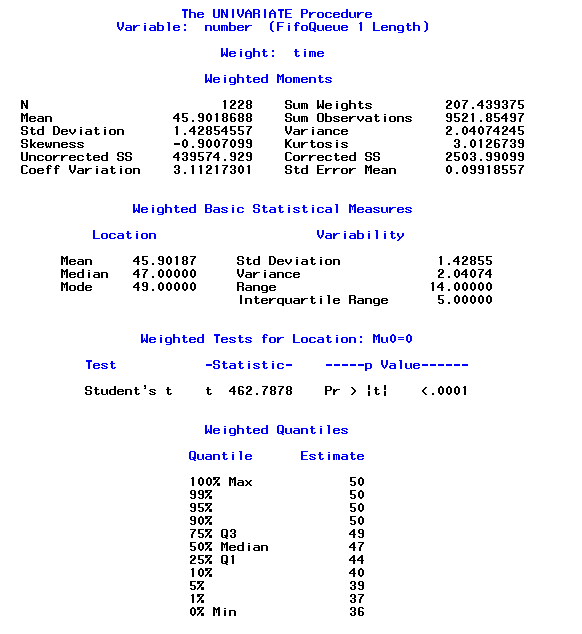
|
This generates the report shown in Figure 8.4 in the SAS Output Window. Figure 8.4 shows that the sample mean queue length is approximately 45.90 and that the sample variance is approximately 2.04.
The Analyze button also opens a graphics window with the histogram on the queue length as shown in Figure 8.5. This shows the sample distribution of queue length for the complete sample path that was collected from the time the Collect Data check box is selected until the time the Analyze button is selected.
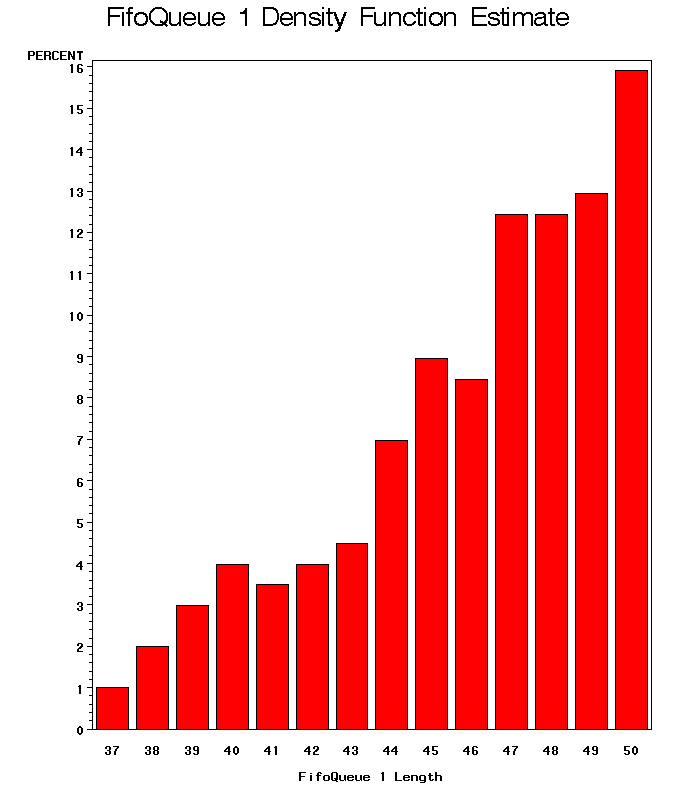
|
It is important to note that the observations in the sample path are not independent. There can be a significant amount of autocorrelation in the observations of queue length.
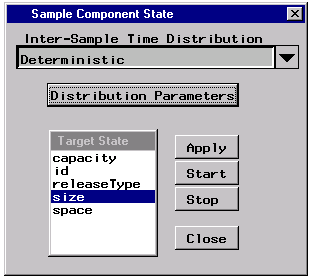
|
This control panel is opened when the queue labeled "ID: 1" in Figure 2.17 is dropped on the histogram.
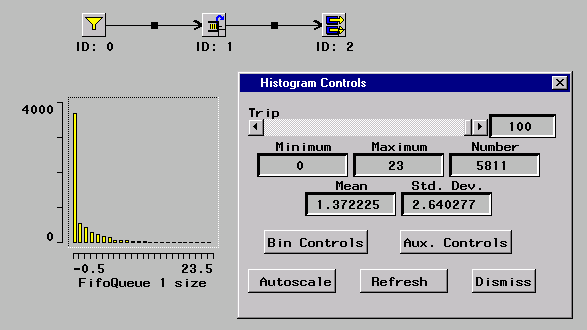
|
Figure 2.17 also shows the histogram control panel opened. Notice that the control panel shows the simple statistics: minimum, maximum, mean, and standard deviation. Also note that when a component is dropped on a chart, a bucket is automatically associated with the chart component. The bucket is where the sample is collected. The controls for this implicit bucket can be viewed by clicking the Bin Controls button in the Histogram Controls window. it opens the control panel for the bucket as shown in Figure 2.15.
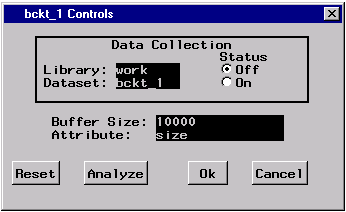
|
You can display more detailed statistics on queue length using SAS data sets. The "Data Collection" section in the Bucket control panel shows a data collection Status check box. If this is selected, then data on the component state changes are routed to the SAS data set named WORK.BCKT_1. If sample data have been collected for a time, then clicking the Analyze button will generate a univariate analysis performed by the UNIVARIATE procedure and a histogram.
|
Chapter Contents |
Previous |
Next |
Top |
Copyright © 1999 by SAS Institute Inc., Cary, NC, USA. All rights reserved.